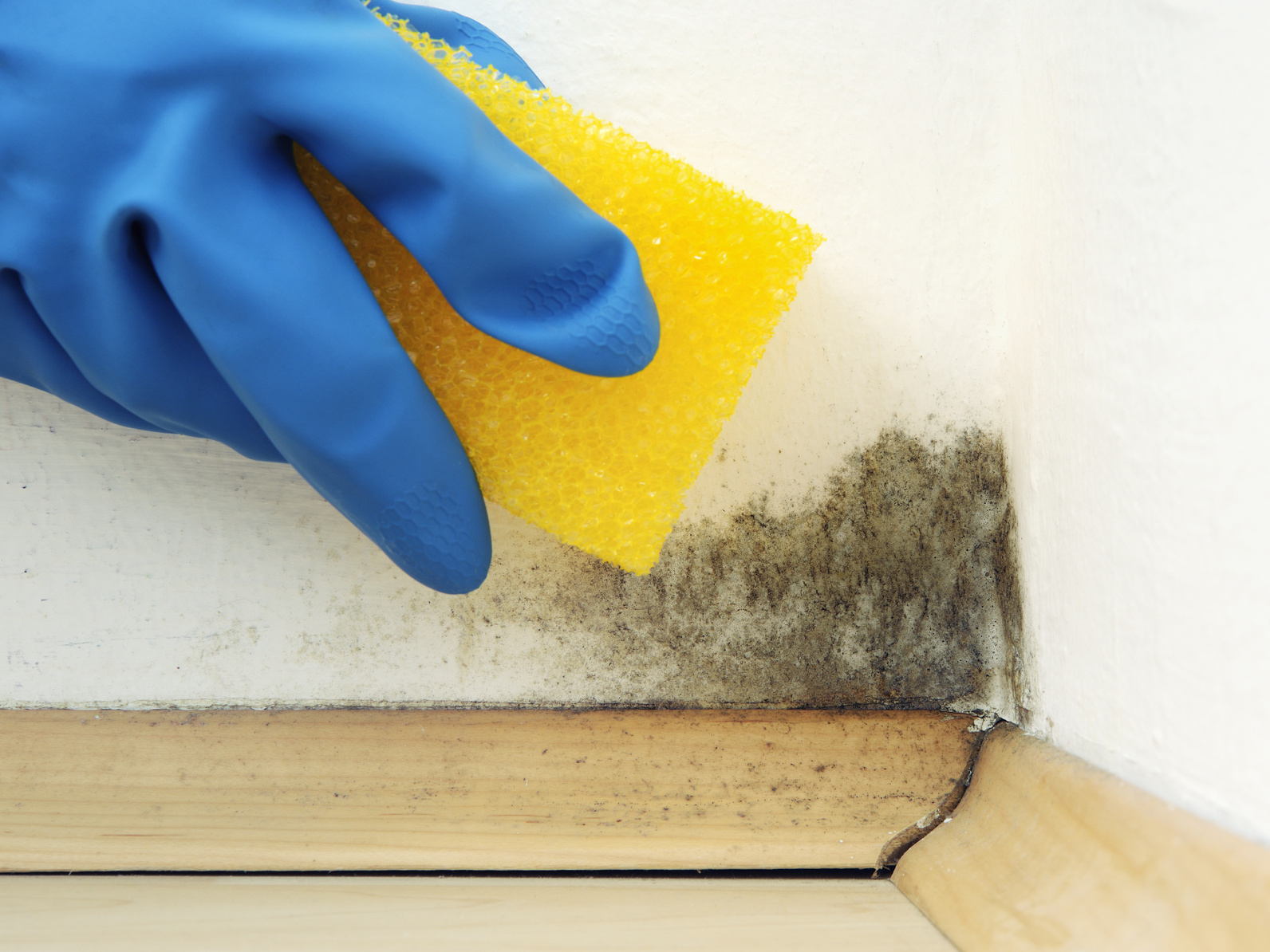It is estimated one in every three to four homes in Germany has been affected by moisture which can lead to the formation of mould. Mould can easily be seen by the naked eye when black, green or brownish spots appear on walls and furniture. Unfortunately, it also grows in unseen places, for examples in hollow spaces under floorboards and plasterboard walls or behind built-out attic space. In these cases the mould is not visible to the naked eye, but a musty smell is a telltale sign of its presence.
The main cause of mould formation is always excessive humidity. This may be due to structural conditions, for example if water penetrates the building through damages on the facade or when condensation occurs indoors due to lacking or improperly installed insulation. In this case only remediation measures will help.
Dampness also occurs when residents do laundry or take showers. They can do something about the situation by ventilating and heating properly and regularly.
Once mould has formed in the building it is important to determine the cause. If infestation is large-scale it is wise to call a professional company. Residents can often clean up smaller patches for known causes themselves.
The German Environment Agency’s new manual on the prevention, detection and clean-up of mould infestation in buildings [Leitfaden zur Vorbeugung, Erfassung und Sanierung von Schimmelbefall in Gebäuden] explains the best ways to detect both visible and invisible mould, what home owners and tenants can do to prevent and clean up mould, and how professionals should approach the problem.
The mould manual was developed by the Indoor Air Hygiene Commission (IRK) at UBA in collaboration with external experts. It is aimed primarily at professionals who deal with the determination and clean-up of mould damage as a knowledge base. Others who are affected by mould (building residents) will also find useful tips and advice on how to handle mould.


